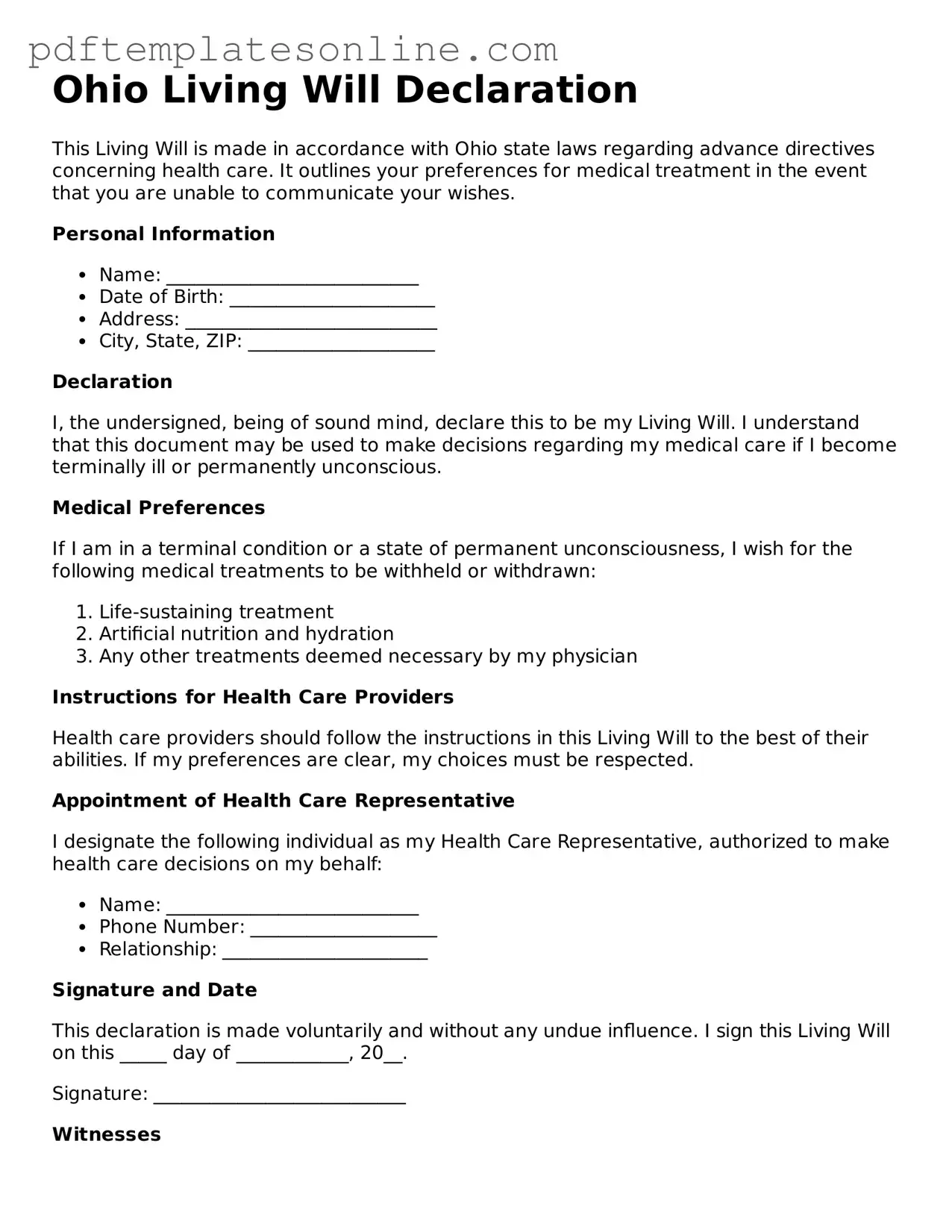Filling out the Ohio Living Will form is a critical step in ensuring that your healthcare wishes are honored. However, many individuals make common mistakes that can lead to confusion or invalidation of their directives. Understanding these pitfalls can help you avoid them.
One frequent error is not being specific about medical treatments. It's essential to clearly outline your preferences regarding life-sustaining treatments. Vague language can lead to misinterpretation by healthcare providers.
Another mistake is failing to sign and date the document. A Living Will must be signed to be valid. Without your signature and the date, the document may not be recognized, leaving your wishes unfulfilled.
Many people neglect to discuss their Living Will with family and healthcare providers. Open communication ensures that everyone understands your wishes and can advocate for them if necessary. This step is crucial for avoiding disputes or misunderstandings later on.
Additionally, individuals often forget to designate a healthcare proxy. While a Living Will outlines your wishes, having a trusted person to make decisions on your behalf if you cannot is equally important. This proxy should be someone who understands your values and preferences.
Some individuals make the mistake of using outdated forms. Laws can change, and it's vital to ensure you are using the most current version of the Ohio Living Will form. An outdated document may not reflect your intentions or comply with current legal standards.
Another common error is not having witnesses. Ohio law requires that your Living Will be signed in the presence of two witnesses who are not related to you or beneficiaries of your estate. Skipping this step can render the document invalid.
People often overlook the importance of reviewing and updating their Living Will regularly. Life circumstances change, and so might your healthcare preferences. Regularly revisiting your Living Will ensures it aligns with your current wishes.
Some individuals make the mistake of not keeping copies accessible. After completing your Living Will, store copies in places where they can be easily accessed by your healthcare providers and loved ones. This accessibility is vital during emergencies.
Lastly, many fail to understand the implications of their choices. It’s crucial to fully comprehend what each decision means for your care. Take the time to research and discuss these choices with trusted advisors.
By being aware of these mistakes, you can ensure that your Ohio Living Will accurately reflects your wishes and is legally valid. Taking these steps can provide peace of mind for you and your loved ones.
